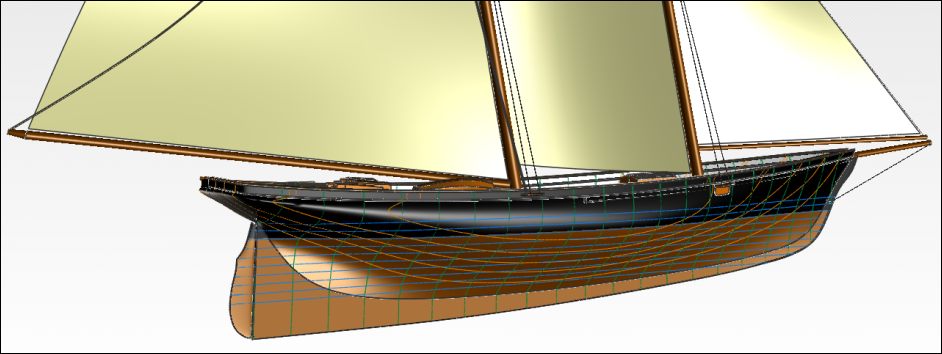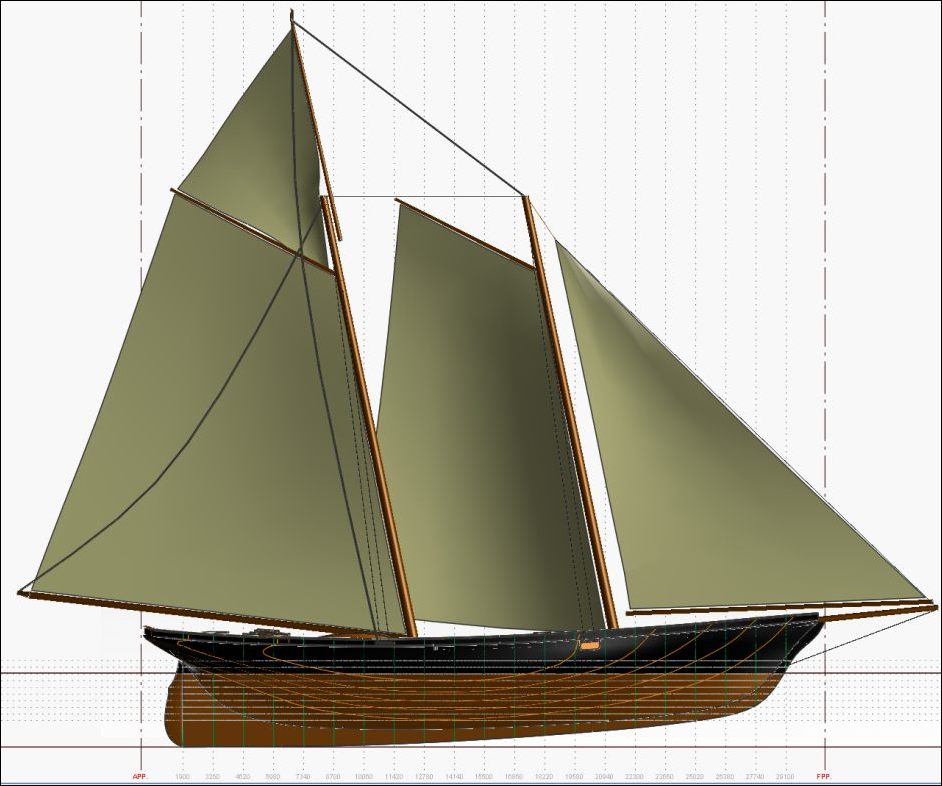Yves GARY Hits: 9770
Category: AMERICA
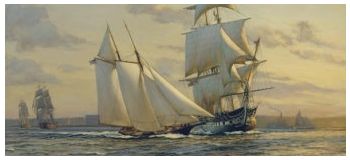 New Design
New DesignThe America was designed by James Rich Steers and George Steers (1820–1856). Traditional "cod-head-and-mackerel-tail" design gave boats a blunt bow and a sharp stern with the widest point (the beam) placed one-third of the length aft of the bow.
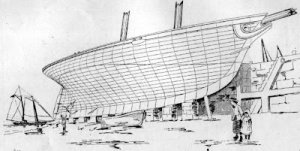 George Steers' pilot boats designs, however, had a concave clipper-bow with the beam of the vessel at amidships. As a result his schooner-rigged pilot boats were among the fastest and most seaworthy of their day. They had to be seaworthy, for they had to meet inbound and outbound vessels in any kind of weather. These vessels also had to be fast, for harbor pilots competed with each other for business.
George Steers' pilot boats designs, however, had a concave clipper-bow with the beam of the vessel at amidships. As a result his schooner-rigged pilot boats were among the fastest and most seaworthy of their day. They had to be seaworthy, for they had to meet inbound and outbound vessels in any kind of weather. These vessels also had to be fast, for harbor pilots competed with each other for business.
With the America, the English received a revelation. When the Marquis of Anglesey, who was 80 years of age and whose memory extended back to Nelson's days, saw her first he exclaimed, "If she is right we must all be wrong."
The America represented in model many things the English yacht-builders had failed to embrace in their type of schooner. There was a tradition in England, surviving the days of the Merry Monarch and his high-pooped and broad-bowed royal yacht, that a vessel to be good must have the most of her beam “in the eyes of her”, as a Yankee sailor would say. The type was distinguished by the “apple bow”, a term sufficiently descriptive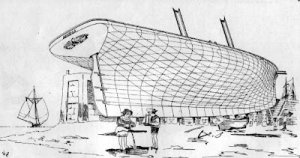 to need little explanation.
to need little explanation.
Contemporary English comment on the America was characteristically frank. “Our first idea”, said a writer of the period, “ was that the secret of her success lay in the formation of her hull, — that long sharp entrance with flanched-out upper works giving the appearance of a great hollow in the fore-body lines, had never been seen in any English schooner. The position of the midship section was not unknown to us ; the formation of her stern was new, and her upright sternpost was at variance with our practice. Our builders admitted, if not publicly at least tacitly, that her hull was perfection”...
Half the success of the America resulted from the exquisite proportion, cut, and material of her sails The America's sails being made of machine-made cotton duck, a fabric not then used in England, and cut to set flat, they presented vast superiority over the loose-woven flax canvas English sails, with their great flow. An old English sailor was quoted as saying on seeing the America's sails, “A craft should sail with stuff like that over her; it is more like veneer board than canvas”.
The lines of America
Source:
The Lawson history
of America's cup
Liens:
archive.org
books.google
Lines created with DELFTSHIP

Download the MODEL FOR DELFTSHIP : Hull only
Download the MODEL FOR DELFTSHIP : Full model
